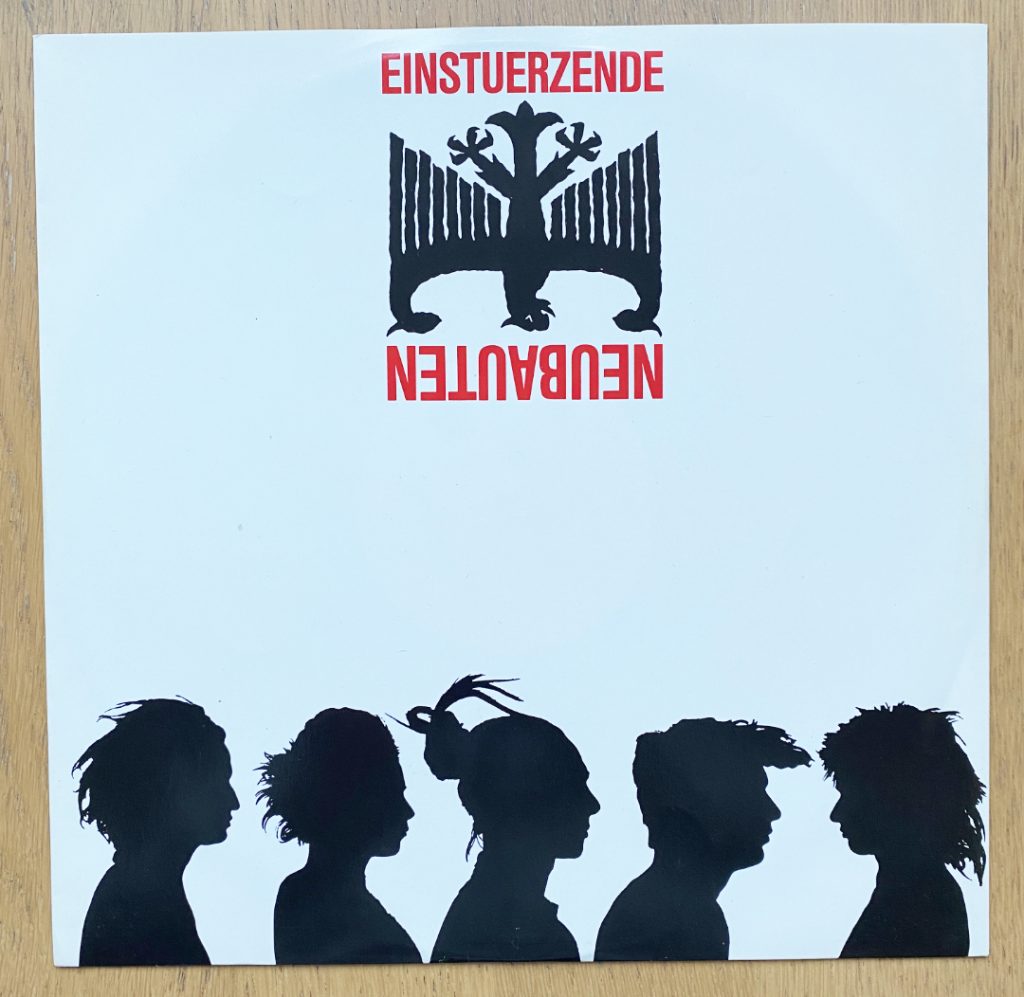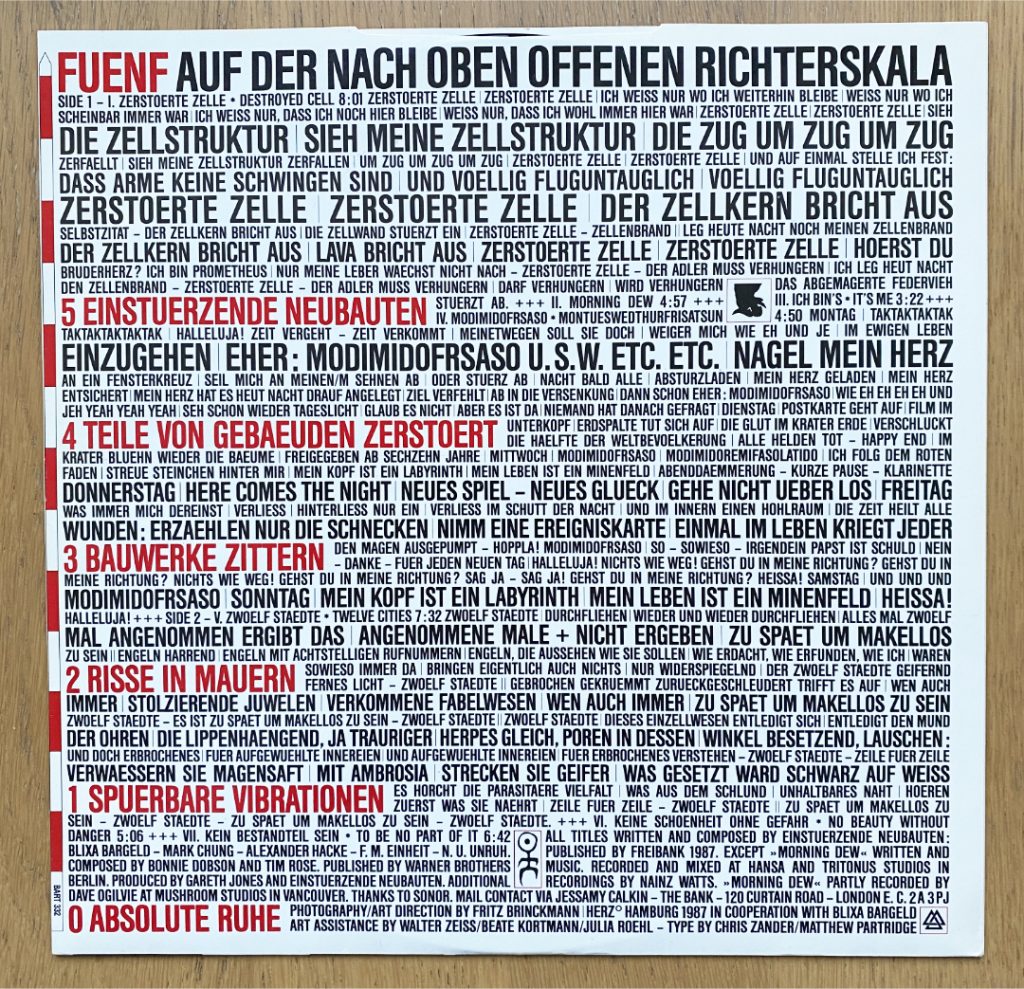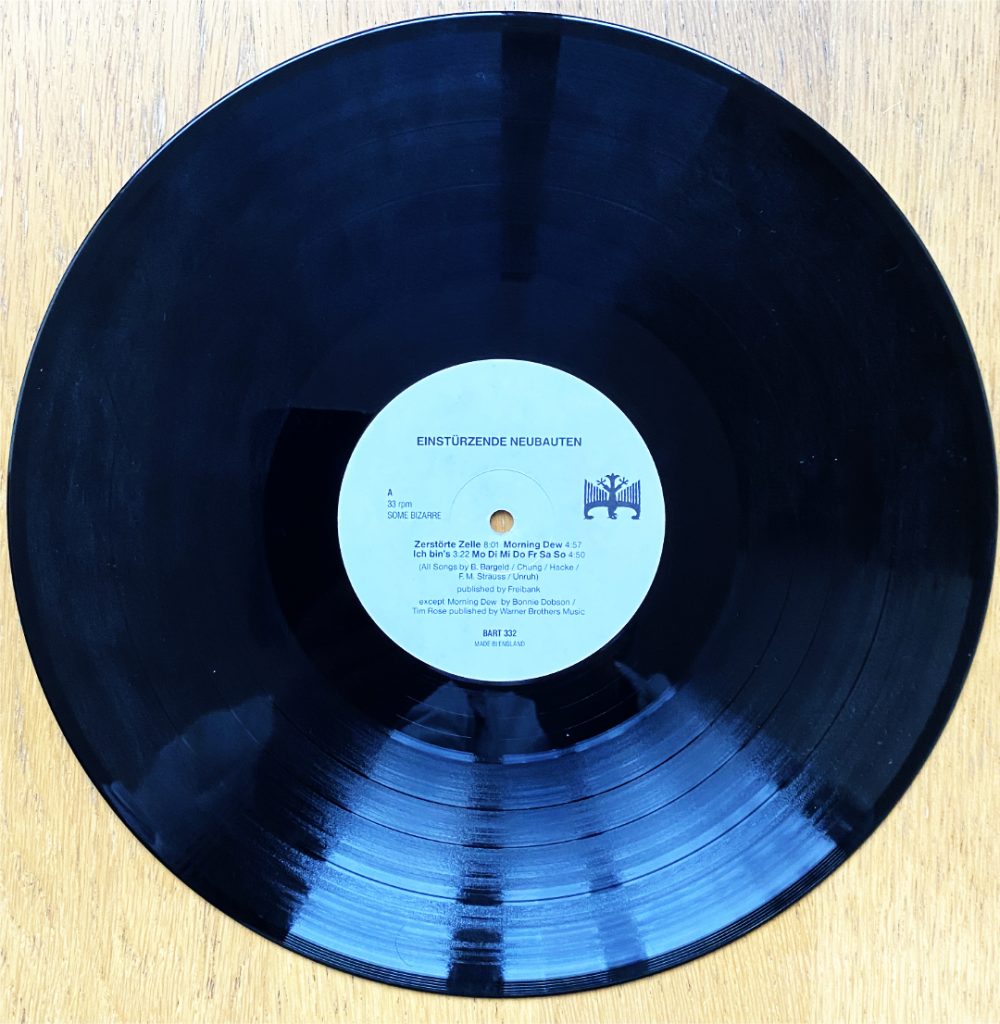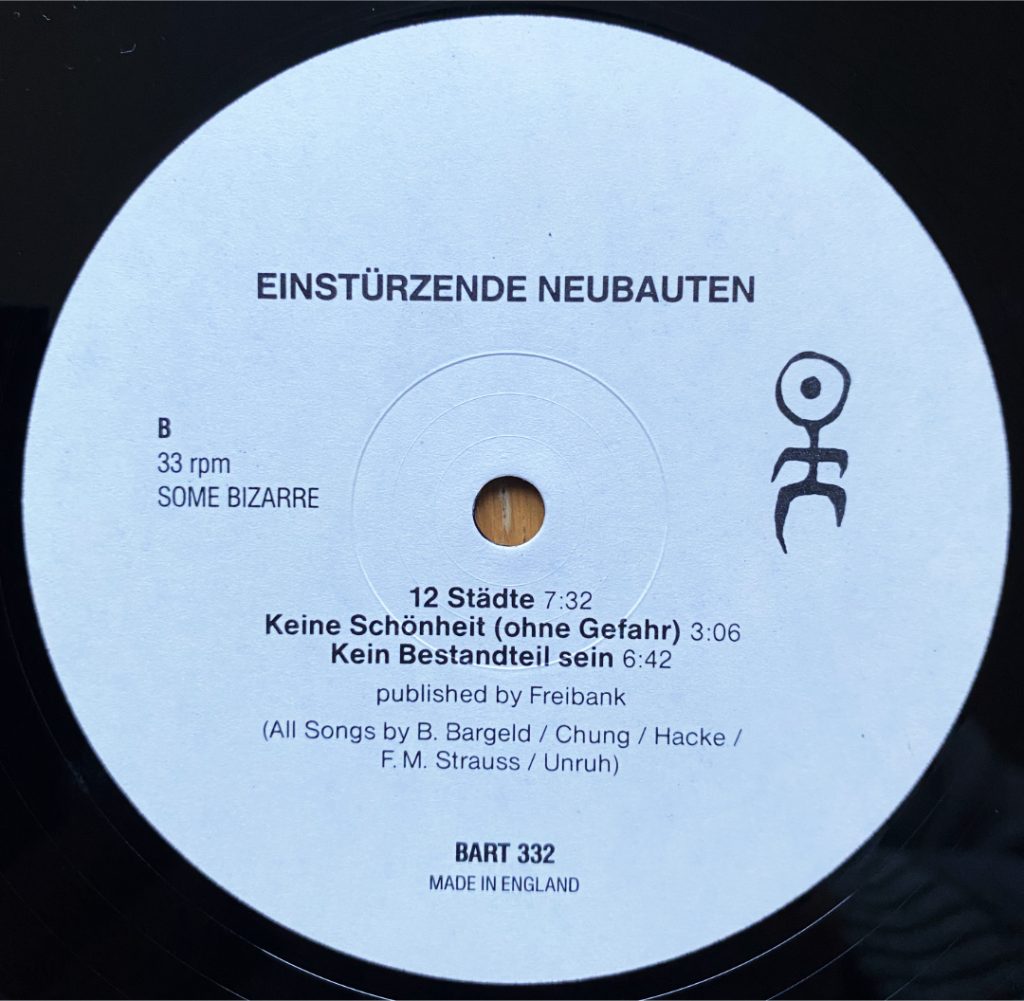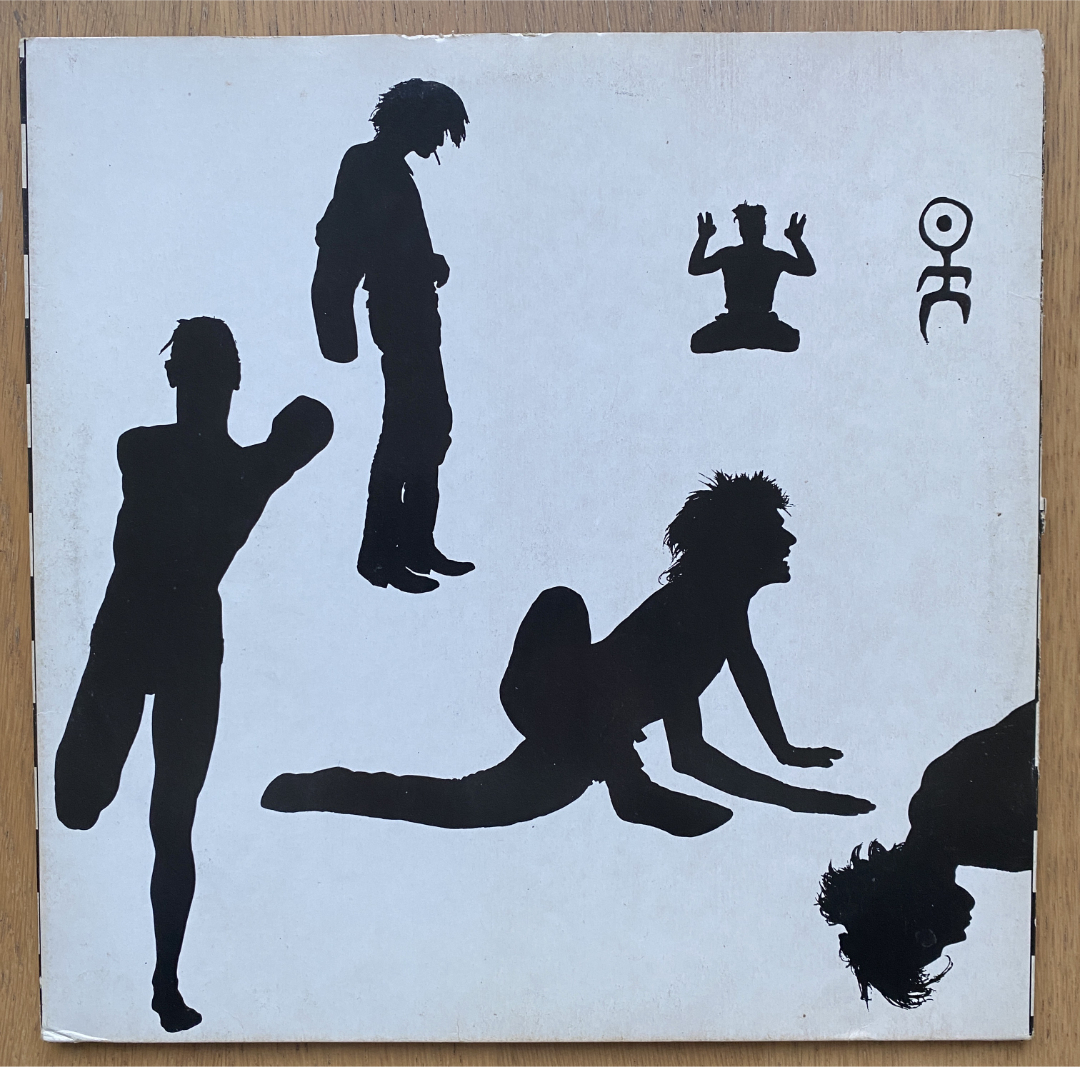
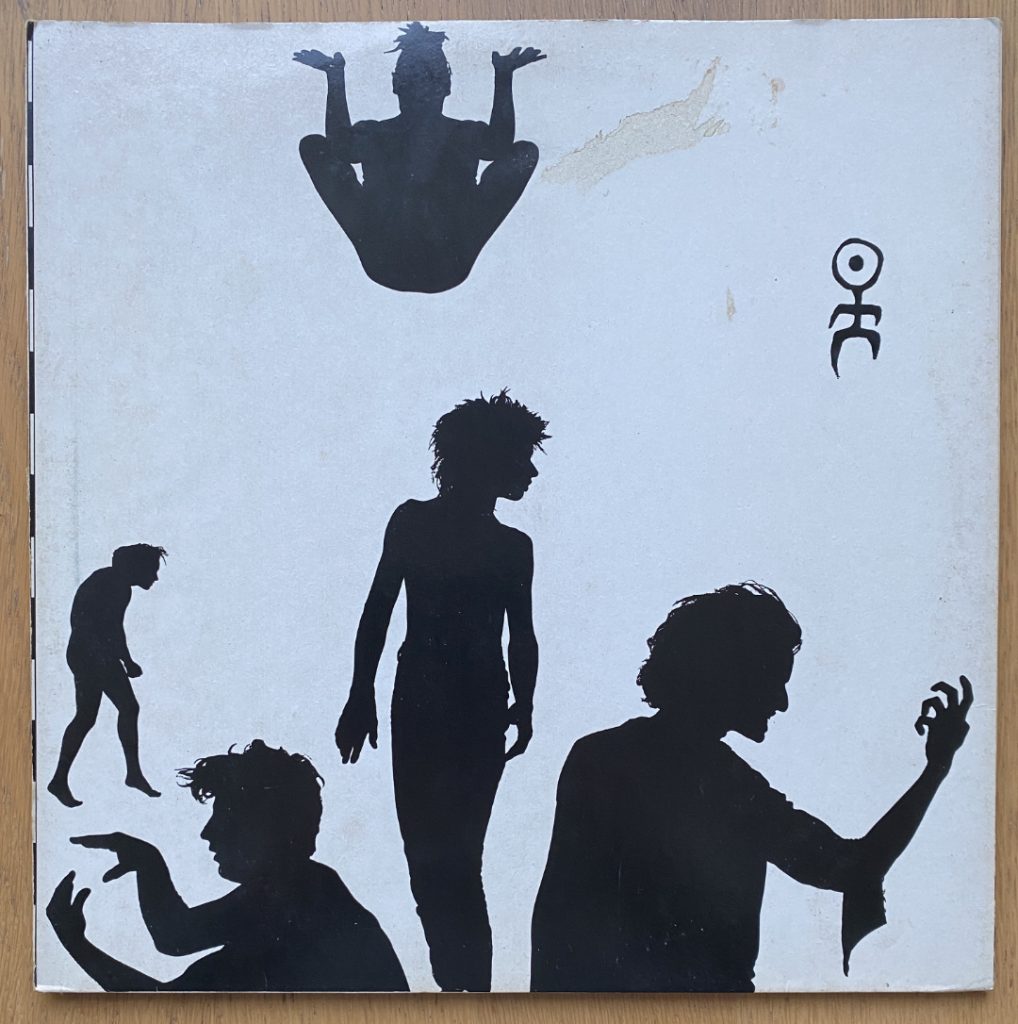
FÜNF AUF DER NACH OBEN OFFENEN RICHTERSKALA
I was fifteen. Marooned in a battleship-grey bedroom, hating life, looking for a light at the end of the tunnel. Investing in this album took a leap of faith. I had never heard a note of Einstürzende Neubauten on the radio, my curiosity stirred by a photograph of the band, looking cool as hell, over a begrudging review of the previous album to this: Halber Mensch. This stab in the dark was compounded further by an actual psychological fear of the contents. Conditioned by mainstream media and the comfy middle class cocoon I inhabited, I believed that such material was somehow bad for me and that its creators and adherents were dangerous individuals. Moreover, I simply felt I wasn’t cool enough to engage with such product; that I would be derided for my effort, not by my narrow-minded peers at school, but by the punks, goths, metalheads associated with this scene. I also was genuinely apprehensive of the content, that it would be too “strong” for me. That it would get under my skin and give me nightmares.
What impulse made me overcome these reservations I now forget. I think that at the end of the day, I was simply attracted to the aesthetic, to the promise of some horrible dark noise. I wanted to hear it. Why wasn’t this stuff on TV? Was it really so bad?
The record proved compelling. Seven constrasting experiments in angular 80s ur-pop and apocalyptic soundscape. The texture of the record is very literal as the band scrape, hammer and jangle their metal instruments against a stripped back guitar-bass-drums it is hard not to visualise anything but the rusted wreckage of a post-industrial wasteland. The rasped anti-ASMR vocals of Bargeld twisting through the chewed-up girders and fractured concrete.
The sleeve art proved to be a regular focus for my attention and imagination at that time.
The band members strike a set of curious poses, their photographic images rendered in a stark binary graphic of black silhouettes against a glaring white void. The strange postures hint at some kind of narrative, beyond insouciant rock star gestures. Because each body is swallowed into its own private black hole, some unusual shapes emerge through figures fused with clothing and foreshortened limbs that suggest amputation. The motivation behind the gestures is sometimes oblique. Why would someone strike such an unnatural pose?
The figures are lithe, assertive, a loping Neanderthal, a twisting hissing lizard-man, a levitating yogi, an anguished neo-Hamlet hipster remonstrating at his existential surroundings. A figure in the corner engages in a primitive shadow play, holding his hands as mouthing creatures, referencing the silhouetted storyboard of the graphic as a whole. The varying sizes of figure hint at a spatial depth, but the ground and horizon are ambiguous and even illogical as one member performs a headstand on the ceiling. The curious band logo, a medieval stick figure with a nucleus-like head, stamped into the space to substitute any authorship or titles, as if to state that the experience embedded into the vinyl is already understood.
I remember staring at it this ensemble for long periods of time, marvelling at how these narratives were created from such a reductionist visual.
My own interpretation is the nexus of five men in some form of ecstatic ritual. A series of actions, of exorcisms, of pauses before the next catharsis. The person reduced to a nullified outline, a fetish totem of energy and then its absence: action, sound, stasis, silence. The music inside is, at times, as sparse as the sleeve and they seem to document each other’s primitive year-zero pantomime, as though these are images of the album’s actual production. Rock star cut outs, stripped of their instruments, left to writhe and howl in white noise. The pronounced edgy 80s hairstyles, slender temporary signifiers of identity, seem to add to the deconstruction of the actual individual. To be erased, to be no part of it.
